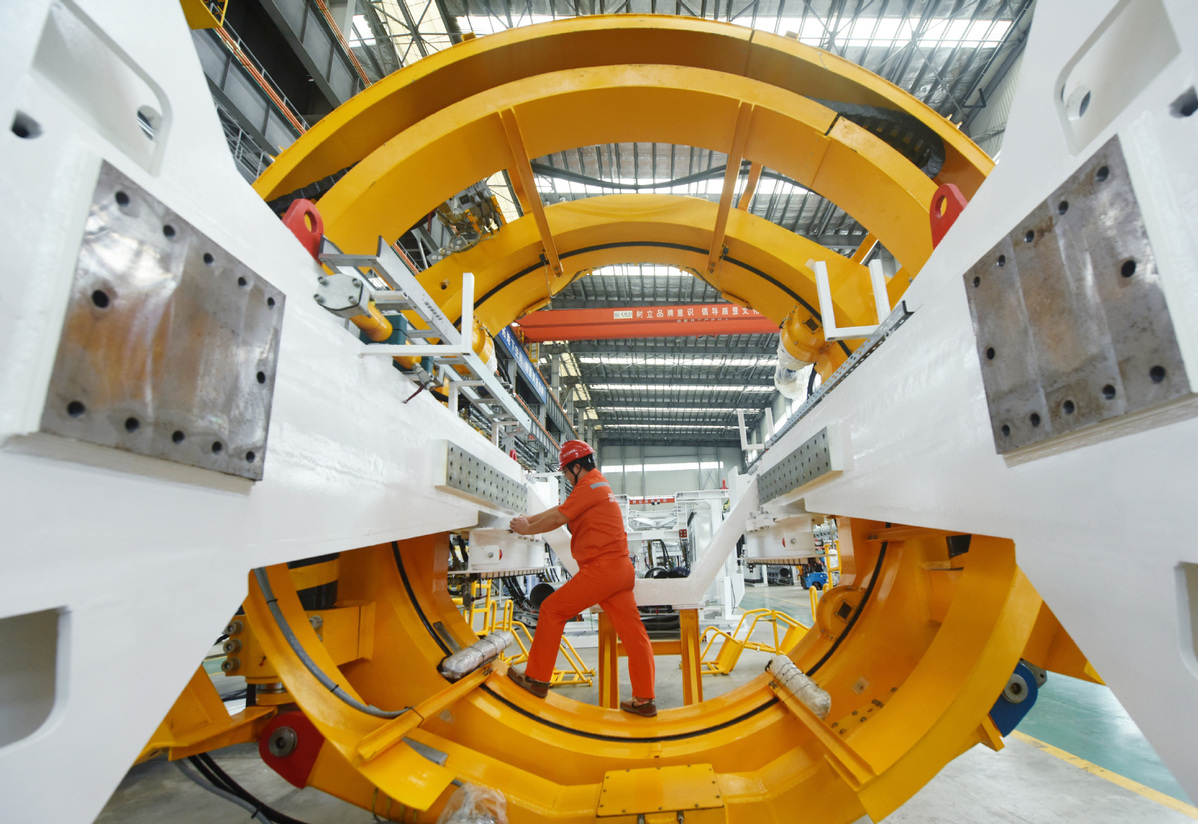Stronger policies key to economic growth

An employee works at a plant in Xiaoshan district of Hangzhou, Zhejiang province, on June 27. [Photo/Xinhua]
China's economic growth in the second quarter may have slowed to below 2 percent year-on-year due to COVID-19 outbreaks, underlining the necessity of beefing up policy adjustments to achieve this year's growth target of around 5.5 percent, economists in and out of the country said.
With stronger support for infrastructure investment, lower market lending rates and refined COVID-19 containment measures, the Chinese economy is expected to stage a strong rebound in the third quarter and strengthen the appeal of renminbi-denominated assets, they said.
Financial markets are closely watching China's second-quarter growth results, which are scheduled to be released next week. After expanding by 4.8 percent year-on-year in the first quarter, China's economy has been severely hit by Omicron outbreaks, although there have been signs of recovery since May.
China's gross domestic product growth may have slowed to 1.4 percent year-on-year in the second quarter due to the impact of COVID-19 outbreaks and supply chain disruptions, said Wang Tao, head of Asia economics at UBS Investment Bank.
Wang Yiming, vice-chairman of the China Center for International Economic Exchanges, said second-quarter economic growth is likely to come in at about 1 percent, meaning economic growth will have to accelerate to 7.8 percent in the second half of the year to achieve full-year growth of 5.5 percent.
"If the nation maintains a relatively high growth target, the package of pro-growth policies should be further expanded," Wang Yiming, who is also a member of the monetary policy committee of the People's Bank of China, the central bank, said at a webinar.
The nation has stepped up efforts to fulfill economic development targets, as the State Council, China's Cabinet, decided on Wednesday to raise 300 billion yuan ($44.8 billion) through financial bonds and other instruments to supplement capital for infrastructure projects.
Yang Yewei, chief fixed-income analyst at Guosheng Securities, said the move can help mitigate the capital shortages of some infrastructure projects and drive up economic growth by generating infrastructure investment worth about 1.5 trillion yuan.
Recognizing the more complex external environment, the central bank pledged on Wednesday to reduce corporate financing costs and bring into full play the guiding function of loan prime rates-lending rates used as the benchmark for bank loans.
With more monetary and fiscal support in the pipeline and the worst of Omicron outbreaks over, China's economic activity will accelerate in the second half of the year, said David Chao, global market strategist for Invesco Asia-Pacific, excluding Japan.
Global investors' interest in renminbi-denominated assets, especially equities, will continue to grow, Chao added.
The global profile of the renminbi has strengthened with a rising share in foreign exchange reserves. Claims in the renminbi accounted for 2.88 percent of the world's allocated reserves as of the first quarter, up from 2.79 percent a quarter earlier and marking the highest level for the currency since the International Monetary Fund began releasing the reading in 2016.
Photos
Copyright © 2022 People's Daily Online. All Rights Reserved.









